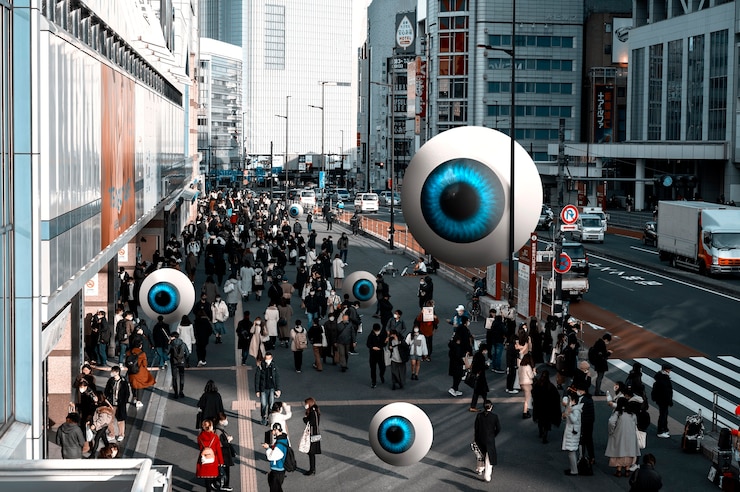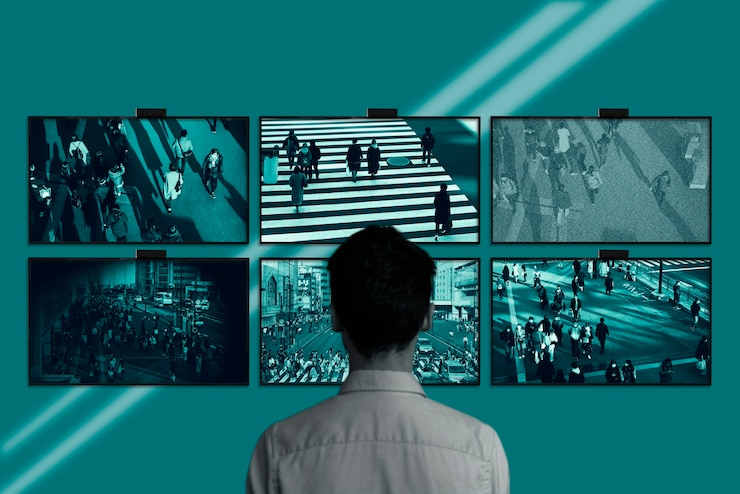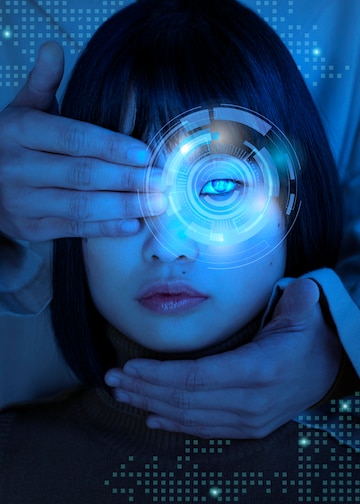
Technology is advancing at an unprecedented pace, and the field of eye-related technology is no exception. From smart contact lenses to AI-driven eye disease detection, the innovations in this sector are transforming healthcare, security, and daily life. Vision-related technologies are helping millions of people worldwide with early disease detection, improved accessibility, and enhanced visual experiences. In this article, we will explore the latest advancements in eye tech, discussing how these developments are shaping the future and addressing key concerns in the industry.
AI-Powered Eye Disease Detection
Artificial intelligence (AI) is revolutionizing eye care by enabling faster and more accurate disease diagnosis. AI-powered tools can analyze eye scans to detect conditions such as diabetic retinopathy, glaucoma, and macular degeneration with high precision. These technologies are particularly beneficial in areas with limited access to eye specialists, allowing early diagnosis and timely intervention. Companies like Google’s DeepMind and IBM Watson are developing AI-driven solutions that help ophthalmologists improve patient outcomes. With AI’s ability to process vast amounts of data in seconds, the future of eye health is becoming more efficient and accessible.
Smart Contact Lenses: The Future of Vision Enhancement

Smart contact lenses are no longer just a futuristic concept; they are becoming a reality.
Augmented Reality (AR) and Virtual Reality (VR) in Vision Technology
Augmented reality (AR) and virtual reality (VR) are transforming various industries, including healthcare, education, and entertainment. Eye-tracking technology integrated into AR/VR headsets enhances the user experience by providing more immersive and responsive interactions.</p>
Retinal Implants and Bionic Eyes
For people with severe visio
n impairments or blindness, retinal implants and bionic eyes offer a glimmer of hope. These devices use microelectronic implants to stimulate retinal cells, sending visual signals to the brain. Researchers have made significant progress in this field, with some patients regaining partial vision through bionic eye technology. Companies like Second Sight and Pixium Vision are at the forefront of this innovation, working on implants that restore sight by bypassing damaged retinal cells. While these technologies are still in the early stages, they hold immense potential for restoring vision to millions of people worldwide.</p>
Biometric Eye Scanning for Security and Authentication
Eye-based biometric authentication is becoming a key player in cybersecurity and personal identification. Iris and retina scanning technologies are being implemented in smartphones, airports, and government facilities for secure access control.
Blue Light Protection and Digital Eye Strain Solutions
With the increasing use of digital devices, concerns about blue light exposure and digital eye strain have surged. Prolonged screen time can lead to eye fatigue, headaches, and disrupted sleep patterns. Innovations in blue light-blocking technology, such as screen filters, specialized eyewear, and software solutions like night mode settings, help reduce the negative effects of screen exposure. Additionally, companies are developing AI-powered tools that remind users to take breaks, adjust screen brightness, and optimize device settings for better eye health. These advancements are essential in maintaining visual comfort in the digital age.
The Role of Gene Therapy in Vision Restoration
Gene therapy is emerging as a groundbreaking treatment for hereditary eye diseases, including retinitis pigmentosa and Leber congenital amaurosis. Scientists are exploring ways to use genetic modification to repair or replace defective genes responsible for vision loss. In recent years, clinical trials have shown promising results, with some patients experiencing significant improvements in their eyesight. With continued research and advancements in gene-editing tools like CRISPR, gene therapy could become a standard treatment for various vision-related conditions, offering hope to those with inherited eye disorders.</p>
3D-Printed Eye Prosthetics and Artificial Corneas
ata-start=”5841″ data-end=”6421″>The development of 3D printing technology has revolutionized the production of eye prosthetics and artificial corneas. Traditionally, creating a custom eye prosthesis was a time-consuming and expensive process. However, with 3D printing, personalized prosthetic eyes can be produced faster and at a lower cost. Researchers are also experimenting with 3D-printed corneal implants, which could provide a solution for individuals suffering from corneal blindness. These technological advancements are making vision restoration more accessible and affordable for patients worldwide.
Eye-Tracking Technology in Healthcare and Gaming
Eye-tracking technology is gaining momentum in various industries, particularly in healthcare and gaming. In the medical field, eye-tracking systems are being used to detect neurological disorders, assess cognitive functions, and improve communication for individuals with disabilities. In gaming, eye-tracking enhances user interaction, allowing players to control movements and make decisions using just their gaze. This hands-free control mechanism is also being integrated into assistive technologies for people with mobility impairments, creating new possibilities for accessibility and engagement.</p>
<strong data-start=”7109″ data-end=”7160″>The Future of Global Eye Tech: What’s Next?

<p data-start=”7164″ data-end=”7756″>The future of eye technology is filled with exciting possibilities. Researchers are exploring brain-machine interfaces that could directly connect visual signals to the brain, bypassing damaged eye structures. AI and robotics are expected to play an even greater role in diagnosing and treating eye conditions. As technology continues to evolve, ethical concerns regarding privacy, accessibility, and cost need to be addressed. The integration of eye tech in daily life will require careful regulation to ensure its benefits reach a global audience without compromising security and ethics.</p>
Conclusion
The rapid advancements in<strong> global eye technology are reshaping the way we perceive and interact with the world. From AI-driven disease detection to smart contact lenses, bionic eyes, and AR/VR applications, these innovations are revolutionizing eye care, security, and accessibility. While challenges such as affordability, ethical concerns, and data privacy remain, continued research and development promise a future where vision-related technologies enhance lives worldwide. As we move forward, it is crucial to ensure that these advancements benefit all individuals, making eye care more efficient, inclusive, and transformative.</p>
art=”8429″ data-end=”8442″>FAQs
Each of these innovations has the potential to significantly improve eye care and accessibility.
1. Are smart contact lenses safe to use?</strong>
Smart contact lenses are still in the development stage, but companies are conducting extensive testing to ensure safety and comfort. Regulatory approvals will be necessary before they become widely available for consumer use.
2. How does AI help in eye disease detection?
AI uses machine learning algorithms to analyze retinal scans and detect early signs of eye diseases such as diabetic retinopathy and glaucoma. This technology enables faster, more accurate diagnoses and improves patient outcomes.
-end=”9409″>3. Will bionic eyes completely restore vision?</strong>
Bionic eyes are still in the early stages, and while they can provide partial vision restoration, they do not fully replicate natural sight. Research is ongoing to improve their effectiveness and accessibility.
4. What are the ethical concerns surrounding eye tech?
Privacy, data security, accessibility, and cost are major ethical concerns in eye technology.